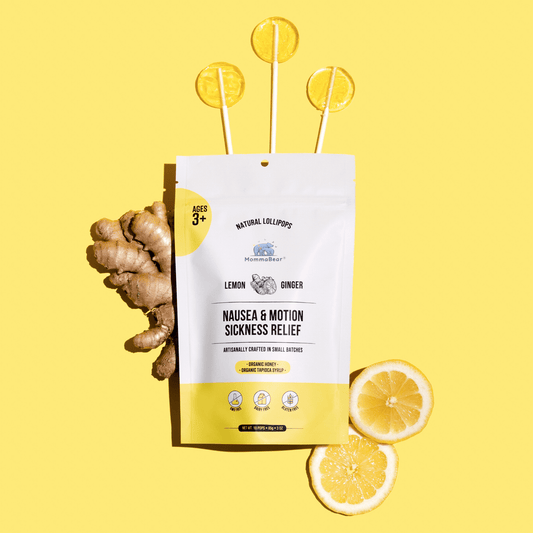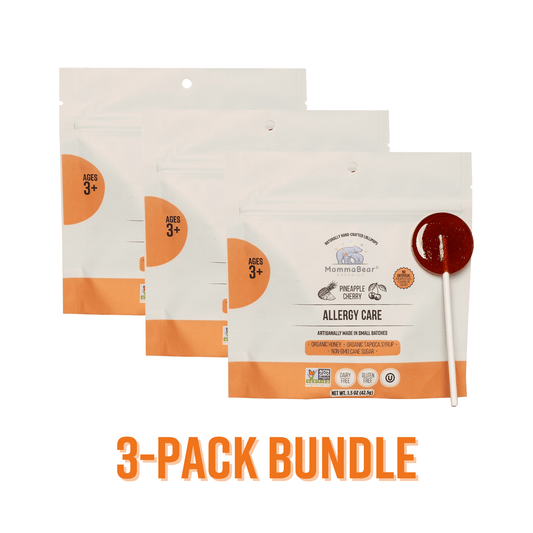I swear, some days my mind just goes and goes. It feels like a browser with way too many tabs open, and I can feel it in my body—my heart starts beating a little too fast, my breathing gets all shallow. It’s exhausting. For a long time, I didn't think there was much I could do in the moment, but learning a few simple breathing exercises has been a game-changer. It’s not a magic cure, but it’s a tool. And it’s free. Here are the three I keep coming back to:
-
Diaphragmatic Breathing: This is that deep belly breathing people talk about. It’s surprisingly good for just lowering your overall stress level.
-
Box Breathing (4-4-4-4): My absolute go-to for when I need to get my head straight, like, right now.
-
4-7-8 Breathing: This one is the big guns for when my thoughts are racing and I can't sleep.
Quick Comparison
Here’s a little cheat sheet I made for myself.
| Technique | Ease of Learning | Time Commitment | Best For | Practice Location |
|---|---|---|---|---|
| Diaphragmatic Breathing | Moderate | 5–10 min, 2–3 times/day | Long-term stress reduction | Quiet space preferred |
| Box Breathing | Easy | A few minutes as needed | Quick stress relief | Anywhere, anytime |
| 4-7-8 Breathing | Moderate | A few cycles daily | Relaxation, better sleep | Quiet environment |
3 Breathing Exercises to Manage Stress and Anxiety - NUH
Top 3 Breathing Techniques for Anxiety Relief
Okay, so there are a ton of these breathing things out there, and it can get a little overwhelming. But these are the three that I’ve found actually work for me in different situations. You don’t have to do all of them, just, you know, see if one of them feels right.
Diaphragmatic Breathing (Belly Breathing)
So, this one is all about breathing from your belly instead of your chest. It sounds a little weird at first, I know. I used to think I was breathing just fine, but most of us do this shallow chest breathing thing, especially when we’re stressed. I saw this thing from the Cleveland Clinic that basically said learning to breathe with your diaphragm can strengthen it, slow you down, and help you use less energy just to breathe. It really clicked for me.
Here’s how I do it: I’ll lie down or just sit somewhere comfy. I put one hand on my chest and the other on my stomach, right below my ribs. Then I breathe in slowly through my nose and try to make my stomach push my hand up, while the hand on my chest stays pretty still. Then I tighten my stomach muscles and breathe out slowly through my mouth, like I’m blowing through a straw.
I started just doing it for maybe 5 minutes a few times a day. It felt awkward at first, but now it feels way more natural.
Box Breathing (4-4-4-4 Method)
This is my favorite. Seriously. It’s so simple, you can do it anywhere and no one will even know. It's just a steady 4-4-4-4 rhythm that helps pull my brain out of a spiral.
I read that even Navy SEALs use it to stay calm under pressure, which is pretty cool. I think the science behind it is that the steady rhythm helps regulate your nervous system. I just know that when I feel that familiar anxiety creeping in, I can do this for a minute or two and it just… helps. It centers me.
You just breathe in for a count of 4, hold your breath for a count of 4, breathe out for a count of 4, and then hold your breath again for a count of 4. That’s it. One box. Repeat as needed.
4-7-8 Breathing (Relaxing Breath)
Okay, this one is the heavy hitter. It feels like a magic trick sometimes, especially when I can’t fall asleep because my brain won’t shut up. It was developed by a Dr. Andrew Weil, who got the idea from old yogic practices. Some people call it a "natural tranquilizer," which sounds a little intense, but honestly, it can really knock the anxiety right out of you.
I saw somewhere that the whole point is that it forces your nervous system to switch from "fight or flight" mode to "rest and digest" mode. I believe it.
So you just breathe in quietly through your nose for 4 seconds. Hold your breath for 7 seconds. Then whoosh it all out through your mouth for 8 seconds. The long exhale is apparently the most important part. I do that a few times and I can feel my whole body get heavier and calmer. It’s a lifesaver on rough nights.
Breathing Technique Comparison
It can be a little confusing trying to figure out which one to use when, so I tried to break it down for myself. It’s not that one is better than the others, they just have different jobs, you know?
Side-by-Side Technique Comparison
Here’s a quick look at how they stack up in my mind:
| Technique | Ease of Learning | Time Commitment | Best For | Practice Location |
|---|---|---|---|---|
| Diaphragmatic Breathing | Moderate | Start with 5–10 minutes, 2–3 times daily; progress to 15–20 minutes once or twice daily | Long-term stress reduction; building a solid breathing foundation | Quiet space preferred |
| Box Breathing | Easy (simple 4-4-4-4 pattern) | Just a few minutes to start, gradually increasing over time | Quick stress relief; ideal for workplace use | Anywhere, anytime |
| 4-7-8 Breathing | Moderate (breath holding can be tricky) | Begin with a few cycles, adjusting to a 4-4-6 count before progressing to 4-7-8 | Preparing for sleep; calming racing thoughts | Quiet environment recommended |
The holding your breath part in 4-7-8 can be a little tricky. I definitely started with a shorter count, like 4-4-6, and worked my way up. The main thing is that your exhale is longer than your inhale.
Quick Relief vs Long-Term Benefits
Sometimes you need a quick fix, and other times you need to, like, build up a long-term defense against the stress. For me, box breathing is the 'oh crap' button I press when I feel panic rising. But the belly breathing... that's more like a daily vitamin. Doing it consistently seems to lower my baseline stress level over time.
I read this interesting thing from Stanford Medicine that said breathing exercises can actually work faster than mindfulness practices for calming your body down. A doctor there said something like when you learn to control the physical feelings of stress, you're in a better position to actually deal with the thing that's stressing you out. That makes a lot of sense to me.
sbb-itb-e1a023f
Adding Breathwork to Your Daily Routine
The hardest part is actually remembering to do it, right? It's not like you just magically start deep breathing when you're anxious. You have to build it into your day until it becomes a habit.
Creating a Daily Breathing Practice
Honestly, consistency is more important than how long you do it for. I used to think I had to meditate for 30 minutes or it didn't "count," but that's just not true. Just five minutes a day is enough to start building the habit. I try to do some belly breathing when I wake up to start the day off calmly, and the 4-7-8 thing is now part of my bedtime routine.
When and Where to Use Each Technique
Here's my real-life breakdown. Box breathing is for when my boss emails me at 5 PM on a Friday, or when I'm stuck in traffic and about to lose it. It's my discreet, in-the-moment tool. Diaphragmatic breathing is for when I actually get a quiet moment to myself, maybe with my morning coffee. And 4-7-8 is my last resort when my brain won't shut up at bedtime.
Using Multiple Techniques Together
It’s kind of cool to have a few different tools in your back pocket. You can mix and match them depending on what the day throws at you. I’ve heard people talk about another one where you make your exhale twice as long as your inhale. Haven't totally gotten the hang of that one yet, but it's on my list to try. The point is to just pay attention to your breath. It’s always there, you just have to remember to use it.
Safety Tips and Precautions
Okay, so this is important stuff. Most of the time, this is totally safe, but you gotta listen to your body and just be smart about it.
Who Should Avoid Certain Techniques
If you've got other health stuff going on, like heart issues or really bad asthma, it's probably a good idea to just run it by your doctor first. Better safe than sorry, you know? It's just about being mindful of your own body and what it needs.
Signs of Overbreathing
I've definitely done this before... you get a little dizzy or tingly. It's because you're breathing too fast or too deep, too soon. I read this great explanation from a Ph.D. that said taking a huge gulp of air when you're panicking is actually the worst thing you can do because it messes up your carbon dioxide levels. So if you feel lightheaded, just stop and breathe normally for a bit. The goal is calm, slow breathing, not hyperventilating.
Final Thoughts
It’s funny how something as simple as breathing, something our bodies do all day without us thinking about it, can make such a difference. I used to think it was all a bit... fluffy? You know, a bit too "woo-woo" for me. But then I tried it when I was really at my wit's end one day, and it just worked.
It’s not like it magically solves all my problems. The thing that was stressing me out is still there. But it gives me a pause button. A moment to get my feet back on the ground before I react, before the anxiety takes over. I read that cyclic sighing—which is basically a long exhale—practiced for just 5 minutes a day can improve your mood even more than meditation. I believe it.
I'm still learning, still figuring out what works best for me on any given day. Sometimes it’s a few rounds of box breathing in my car, other times it’s 10 minutes of belly breathing before the kids wake up. But just knowing I have this tool, that I can just stop and breathe... that's something. It really is.
FAQs
What are the best breathing techniques to help with my anxiety symptoms?
Honestly, it's really about what feels right for you. For me, diaphragmatic breathing (that belly breathing one) is great for just overall calming down. If I'm feeling really acute anxiety, like the start of a panic attack, the 4-7-8 method can be a real lifesaver. And then box breathing is my go-to for in-the-moment stress, like when I'm at work. I'd say just try them out and see which one clicks.
Can breathing exercises be combined with other techniques to reduce anxiety more effectively?
Oh, for sure. I try to do some deep breathing when I'm meditating, which feels like a double win. Sometimes I'll also do it while I'm trying to visualize my day going well or just trying to be more mindful of the moment. It all kind of works together to ground you.
Are there any safety tips or risks to consider before starting breathing exercises for anxiety?
Yeah, you do have to be a little careful. Like, if you have any existing health concerns like heart or respiratory conditions, it’s probably a good idea to check with your doctor first. It’s also pretty common to feel a little dizzy or lightheaded when you first start, so I always make sure I’m sitting down. Definitely don’t try these for the first time while you're driving or something, you know? Just use your common sense and listen to your body. If you feel weird, just stop and breathe normally.
Related posts
- 10 Natural Remedies for Seasonal Allergies
- How Herbal Candy Eases Anxiety
- How Organic Lollipops Help with Travel Anxiety
- Natural Remedies for Muscle Recovery with Protein










